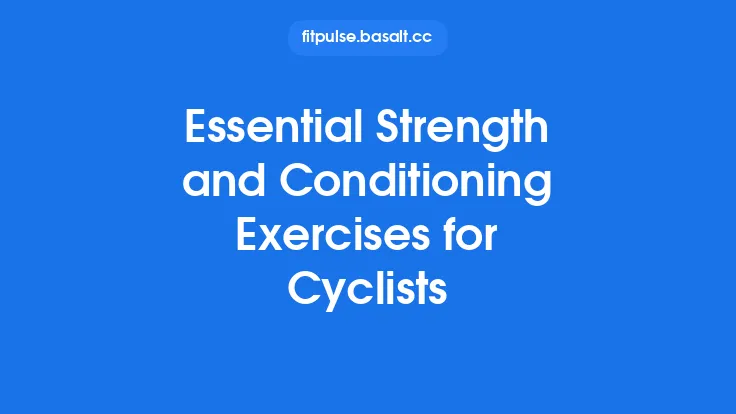Core stability is the invisible foundation that allows a fighter to generate power, maintain balance, and protect the spine during the most demanding moments of a bout. While many athletes focus on visible strength—bench presses, squats, or heavy bag work—the ability to keep the torso rigid and coordinated under load often separates a good grappler or striker from a great one. This article delves into the anatomy, biomechanics, and specific exercises that build a resilient core tailored to the unique demands of grappling and striking disciplines.
Understanding Core Stability in Combat Sports
Core stability refers to the capacity of the muscles surrounding the lumbar spine, pelvis, and thoracic cage to maintain a neutral spine while resisting external forces. Unlike core “strength,” which is often measured by how much weight can be lifted, stability emphasizes control, timing, and inter‑muscular coordination. In combat sports, the core must:
- Transfer force from the lower body to the upper body (and vice‑versa) without energy leaks.
- Resist rotational and shear forces generated by opponent grips, throws, or strikes.
- Maintain posture during rapid changes in direction, level changes, and ground transitions.
- Protect the lumbar spine from compressive and tensile loads that can lead to injury.
Key muscle groups involved include the deep stabilizers (transversus abdominis, multifidus, diaphragm, and pelvic floor) and the more superficial movers (rectus abdominis, external/internal obliques, erector spinae, and hip abductors/adductors). A well‑balanced core integrates these layers into a coordinated “corset” that stiffens when needed and relaxes when mobility is required.
Core Demands for Grapplers vs. Strikers
| Aspect | Grapplers (e.g., BJJ, Judo, Wrestling) | Strikers (e.g., Boxing, Muay Thai, Kickboxing) |
|---|---|---|
| Primary Loads | Sustained compression, lateral shear from opponent’s grips, frequent hip‑to‑shoulder rotations during sweeps and submissions. | Repetitive high‑velocity rotational torque from punches and kicks, rapid extension/flexion during footwork. |
| Stability Focus | Isometric endurance to hold positions (mount, guard) and resist opponent’s attempts to break posture. | Dynamic stability to maintain balance while delivering or evading strikes, especially during pivoting. |
| Typical Failure Mode | Core collapse leading to loss of guard or exposure to submissions. | Loss of torso rigidity causing reduced punch/kick power and vulnerability to counters. |
| Training Emphasis | Long‑duration holds, anti‑rotation drills, hip‑spine integration. | Explosive anti‑rotation, rapid bracing, and high‑speed rotational control. |
Understanding these nuances helps in selecting exercises that mimic the specific stress patterns each discipline encounters.
Key Principles for Designing Core Stability Programs
- Progressive Overload of Control, Not Load – Increase the difficulty by adding instability, altering limb positions, or extending hold times rather than simply adding weight.
- Specificity of Movement Planes – Grapplers benefit from sagittal and frontal plane stability; strikers need robust transverse plane control.
- Integration of Breath – The diaphragm and intra‑abdominal pressure (IAP) are central to spinal rigidity. Teach athletes to brace by exhaling sharply or using a “Valsalva‑like” breath during heavy holds.
- Closed‑Chain Emphasis – Exercises where the hands or feet remain in contact with a stable surface better replicate the ground‑based nature of combat.
- Frequency Over Volume – Short, high‑quality sessions (3–5 minutes) performed 3–4 times per week are more effective than long, low‑intensity sets.
Foundational Core Activation Drills
Before progressing to sport‑specific movements, athletes should master basic activation patterns:
- Dead‑Bug with Opposite Arm/Leg Extension – Lying supine, arms extended toward the ceiling, knees bent 90°. Slowly lower the right arm behind the head while extending the left leg, keeping the low back pressed into the floor. Return and repeat opposite side. Focus on maintaining a neutral spine throughout.
- Quadruped Hollow Hold (Bird‑Dog) – From a tabletop position, extend the right arm forward and left leg back, creating a straight line. Hold 5–8 seconds, then switch. This trains anti‑extension and anti‑rotation simultaneously.
- Diaphragmatic Bracing (Stomach Vacuum) – Standing or seated, exhale fully, then draw the belly button toward the spine while maintaining a neutral spine. Hold 10–15 seconds. This reinforces transversus abdominis activation, the core’s primary stabilizer.
These drills are performed for 2–3 sets of 8–10 repetitions, emphasizing quality over quantity.
Grappler‑Focused Core Exercises
- Weighted Guard Retention Hold
- Setup: Partner applies a light pressure on the hips while you maintain a closed guard.
- Execution: Engage the core, squeeze the glutes, and keep the lumbar spine neutral. Hold for 20–30 seconds, then switch sides.
- Progression: Add a light plate (5–10 lb) on the abdomen or increase pressure from the partner.
- Hip‑to‑Shoulder Bridge with Opponent’s Grip Simulation
- Setup: Lie supine, feet flat, knees bent. Place a resistance band around the hips, anchored to a low point (simulating an opponent’s grip).
- Execution: Drive through the heels, lift hips while resisting the band’s pull. Pause at the top, then lower slowly. 3 sets of 8–10 reps.
- Lateral Roll‑Throughs (Side Plank with Hip Dips)
- Setup: Start in a side plank on the forearm, feet stacked.
- Execution: Lower the hips toward the floor, then lift back to the starting position. This trains anti‑lateral shear, crucial for defending against side‑control and half‑guard attacks. 3 sets of 12–15 reps per side.
- Reverse Tabletop “Guard Pull”
- Setup: Sit with hands behind you, feet flat, hips lifted (reverse tabletop).
- Execution: While maintaining the position, perform a controlled “pull” by drawing the knees toward the chest, mimicking the motion of pulling an opponent into guard. Hold the pull for 5 seconds, then release. 3 sets of 6 reps.
- Kneeling “Sprawl” Hold
- Setup: From a kneeling stance, place a medicine ball against the chest.
- Execution: Extend the hips backward, dropping the shoulders while keeping the ball pressed into the chest, simulating a sprawl. Hold the extended position for 10–15 seconds, focusing on a tight core. 3 sets.
Striker‑Focused Core Exercises
- Rotational Medicine Ball Slam
- Setup: Stand with feet shoulder‑width, holding a light medicine ball (4–6 kg).
- Execution: Rotate the torso to the right, then explosively slam the ball to the left side of the ground, using the core to generate torque. Catch the rebound and repeat. 3 sets of 10 slams per side.
- Standing Cable Anti‑Rotation Press
- Setup: Attach a cable at chest height, stand perpendicular to the anchor.
- Execution: Hold the handle with both hands, step away to create tension, and press straight forward while resisting the cable’s pull to rotate. Keep hips square. 3 sets of 8–12 reps per side.
- Plyometric “Jumping Plank”
- Setup: Begin in a forearm plank.
- Execution: Explosively push up onto the hands, then return to forearms. The rapid transition forces the core to stabilize against vertical and shear forces, mirroring the quick weight shifts during footwork. 3 sets of 12–15 reps.
- Single‑Leg Romanian Deadlift with Rotation
- Setup: Hold a kettlebell in the opposite hand of the standing leg.
- Execution: Hinge at the hips, extending the free leg back while rotating the torso toward the standing leg, then return. This trains hip‑spine coordination essential for powerful kicks. 3 sets of 8–10 reps per side.
- Dynamic “Punch‑and‑Hold” Pallof Press
- Setup: Attach a resistance band at chest height, stand facing away from the anchor.
- Execution: Press the band straight out, then simulate a jab by extending one arm forward while keeping the core braced. Return to the press position. 3 sets of 10 reps per side.
Hybrid Movements Beneficial to Both Disciplines
- Turkish Get‑Up (TGU) – A full‑body movement that demands coordinated core bracing, hip stability, and shoulder control. Perform with a kettlebell or dumbbell, focusing on a slow, deliberate tempo. 3 sets of 4–5 reps per side.
- Weighted Farmer’s Carry with Rotation – Carry heavy dumbbells or kettlebells, and every 10 meters, rotate the torso 90° while maintaining a neutral spine. This builds anti‑rotation endurance and grip strength, useful for clinch work and grappling control.
- Suspended “Body Saw” on TRX – In a plank position with feet in the TRX straps, slide the forearms forward and back while keeping the core tight. The instability challenges both anti‑extension and anti‑rotation pathways.
Progression Strategies and Load Management
- Increase Instability – Move from floor‑based holds to suspended or wobble‑board variations.
- Add Asymmetry – Use unilateral loads (single‑arm kettlebell, one‑leg stance) to force the core to compensate.
- Extend Time Under Tension – For isometric holds, add 5‑second increments each week.
- Manipulate Range of Motion – For dynamic moves, increase the depth of a squat or the height of a hip bridge.
- Periodically Test – Every 4–6 weeks, re‑assess using the field tests below to gauge improvement and adjust difficulty.
Assessing Core Stability: Simple Field Tests
- Plank Endurance Test – Hold a standard forearm plank; record the time until form breaks. Compare against sport‑specific benchmarks (e.g., >2 min for advanced grapplers).
- Side Plank Hip Drop Test – Perform a side plank, then lower hips to the floor and lift back up. Count the number of controlled repetitions in 30 seconds.
- Rotational Stability Test (Pallof Press) – With a cable set at chest height, press out and hold for 10 seconds; note any rotation or hip sway. A stable athlete maintains alignment.
- Dynamic Balance Reach Test – From a single‑leg stance, reach forward with the opposite hand while maintaining a neutral spine. Successful execution indicates integrated core‑hip control.
These tests are quick, equipment‑light, and provide actionable data for programming.
Common Pitfalls and How to Avoid Them
| Pitfall | Why It Happens | Corrective Action |
|---|---|---|
| “Holding Breath” Instead of Bracing | Athletes often think a full Valsalva is required for stability. | Teach diaphragmatic bracing: exhale slightly, then engage the core while maintaining a controlled breath. |
| Over‑Emphasis on Speed Over Form | In a rush to add volume, technique deteriorates, leading to spinal flexion. | Prioritize slow, controlled repetitions; use a timer to enforce proper tempo. |
| Neglecting Anti‑Rotation | Many programs focus on flexion/extension only. | Include at least one anti‑rotation exercise per session (e.g., Pallof press, cable rotations). |
| Using Excessive Load Early | Heavy weights can mask poor motor control. | Start with bodyweight or light resistance; only increase load once the movement pattern is flawless. |
| Skipping Recovery of the Core | Repetitive core work without rest can cause overuse of the lumbar extensors. | Schedule core sessions on non‑consecutive days and incorporate active recovery (e.g., gentle cat‑cow stretches). |
Integrating Core Work into Regular Training Sessions
- Warm‑Up Slot (5 min) – Perform activation drills (dead‑bug, bird‑dog) to prime the core before skill work.
- Skill‑Specific Block (10 min) – Insert a grappler‑or striker‑focused core exercise immediately after technique drills when the nervous system is still primed.
- Conditioning Circuit (15 min) – Pair core movements with cardio or plyometric stations for a time‑efficient session.
- Cool‑Down (3 min) – Finish with a static hold (e.g., hollow hold) to reinforce bracing while the body relaxes.
By embedding core work throughout the training day, athletes reinforce neural pathways without sacrificing overall volume.
Sample Weekly Core Stability Routine
| Day | Focus | Exercise | Sets × Reps / Hold |
|---|---|---|---|
| Mon | Grappler | Weighted Guard Retention Hold | 3 × 30 s |
| Hip‑to‑Shoulder Bridge w/ Band | 3 × 10 | ||
| Side Plank Hip Dips | 3 × 15 per side | ||
| Tue | Striker | Rotational Medicine Ball Slam | 3 × 10 per side |
| Cable Anti‑Rotation Press | 3 × 12 per side | ||
| Plyometric Jumping Plank | 3 × 15 | ||
| Wed | Recovery/Active | Turkish Get‑Up | 3 × 5 per side |
| Farmer’s Carry w/ Rotation | 4 × 30 m | ||
| Thu | Grappler | Reverse Tabletop Guard Pull | 3 × 6 |
| Lateral Roll‑Throughs | 3 × 12 per side | ||
| Kneeling Sprawl Hold | 3 × 15 s | ||
| Fri | Striker | Single‑Leg RDL with Rotation | 3 × 8 per side |
| Dynamic Pallof Press (Punch‑and‑Hold) | 3 × 10 per side | ||
| Suspended Body Saw | 3 × 12 | ||
| Sat | Hybrid | Turkish Get‑Up (light) | 2 × 5 per side |
| Weighted Farmer’s Carry (steady) | 3 × 40 m | ||
| Sun | Rest | Light mobility & breathing work | — |
Adjust volume based on competition schedule, fatigue levels, and individual recovery capacity.
Equipment Options and DIY Alternatives
| Equipment | Primary Use | DIY Substitute |
|---|---|---|
| Resistance Bands | Anti‑rotation, hip‑to‑shoulder bridges | Long exercise tubing or old bike inner tubes |
| Cable Machine | Pallof press, rotational presses | Anchor a sturdy rope to a doorframe with a weight plate |
| Medicine Ball | Rotational slams, dynamic presses | Filled sandbag or a weighted backpack |
| Suspension Trainer (TRX) | Body saw, suspended planks | Use a strong rope tied to a ceiling joist with a sturdy handle |
| Wobble Board | Instability training | Place a half‑filled PVC pipe on a flat surface and stand on it |
The goal is to maintain the principle of instability and asymmetry; any tool that challenges balance and forces the core to engage will be effective.
Maintaining Long‑Term Core Health for Combat Athletes
- Regular Re‑Assessment – Perform the field tests quarterly to detect regressions early.
- Balanced Training – Pair core stability work with adequate posterior chain strength (glutes, hamstrings) to avoid over‑reliance on abdominal muscles.
- Movement Variety – Rotate between isometric, dynamic, and plyometric core exercises to keep neuromuscular adaptations fresh.
- Mindful Bracing – Encourage athletes to think of the core as a “corset” that tightens during heavy contact and relaxes during recovery phases.
- Professional Oversight – Periodically consult a sports physiotherapist or strength coach to fine‑tune technique and address any emerging imbalances.
By treating core stability as a skill rather than a static strength goal, grapplers and strikers can continuously refine the foundation that underpins power, endurance, and injury resilience throughout their careers.





